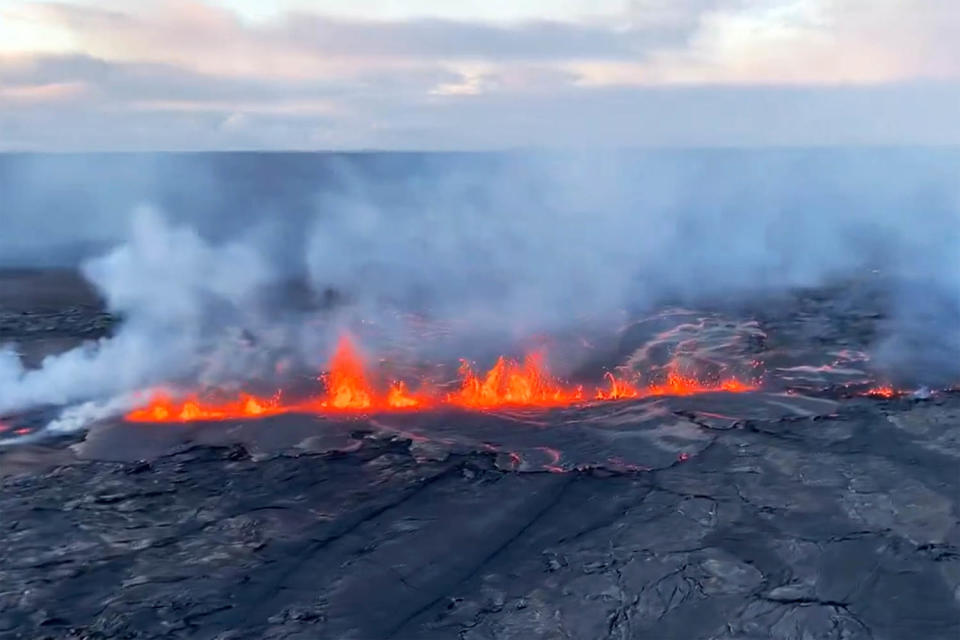Kīlauea greeted darkness early Monday with a slowly bubbling eruption that stopped before sunset and posed no threat to communities on Hawaii’s Big Island, officials said.
The volcano, Hawaii’s second largest after neighbor Mauna Loa, began erupting around 12:30 p.m. through four scratch-like fissures in an area 2.5 miles (4 kilometers) southwest of the caldera, the US Geological Survey said.
Just before 3:00 PM Hawaii Standard Time, the USGS declared the eruption paused. But it stressed in an update that “activity in this region remains dynamic and can change rapidly.”
The USGS said seismic activity near the eruption “decreased sharply” and visible lava emission stopped about 12 hours after the eruption began.
The National Park Service, which manages Hawai’i Volcanoes National Park, where Kīlauea is located, said in its own update: “It is unlikely that a night glow or lava sighting will be visible at this time.”

Earlier in the afternoon, only one of the rifts, one just over half a mile long, was active, the agency said. The USGS and the Hawaii County Civil Defense Agency said the Big Island’s volcano alert level has been downgraded from warning to watch, meaning a limited-hazard eruption is underway.
In announcing the eruption had been paused on Monday, the USGS said the volcano would remain at alert level.
The eruption occurred in a zone around the caldera that has been closed since early 2008, when sulfur dioxide emissions and an eruption raised safety concerns.
Monday’s eruption was so remote that officials did not foresee any threats to Big Island communities.
Federal geologists compared the eruption to an eruption at the same location in December 1974 that lasted six hours. “The cracks from this eruption have the same orientation,” the USGS said in its update.
The eruption occurred Monday morning under the watchful eyes of seismometers, GPS monitors, tiltmeters, infrasound meters, gas detectors and thermal and visual cameras maintained by the Hilo-based Hawaiian Volcano Observatory.
The federal observatory’s scientist-in-charge, Ken Hon, told NBC News affiliate KHNL from Honolulu: “This was a real sneaky outburst.”
Yet this did not happen without some of those 200 sensors sounding. The USGS said in its latest update that the eruption has been accompanied by more than 400 small earthquakes since the weekend, including a magnitude 4.0 earthquake at 7:07 p.m. on Sunday, with tilt meter readings indicating significant ground deformation and increased sulfur dioxide gas emissions .
And federal scientists in Hilo knew something was up. “Seismicity and deformation increased significantly after 5 p.m. on June 2, prompting the USGS Hawaiian Volcano Observatory to raise Kīlauea’s alert level,” the USGS said in its update.
Gas emissions were one of the main concerns, the agency said.
The National Park Service said some parts of Hawai’i Volcanoes National Park would remain closed, including Maunaiki Trail, a remote 7-mile trail near Kīlauea, a stretch of Hilina Pali Road, Kulanaokuaiki Campground, Pepeiao Cabin, Ka’aha Trail and campground, and the Ka’ū Desert Trail and turnoff on Highway 11.
A USGS primer on volcanoes in Hawaii said Kīlauea is an overachiever, having erupted “almost continuously” from 1983 to 2018. The last eruption was in September.
This article was originally published on NBCNews.com






